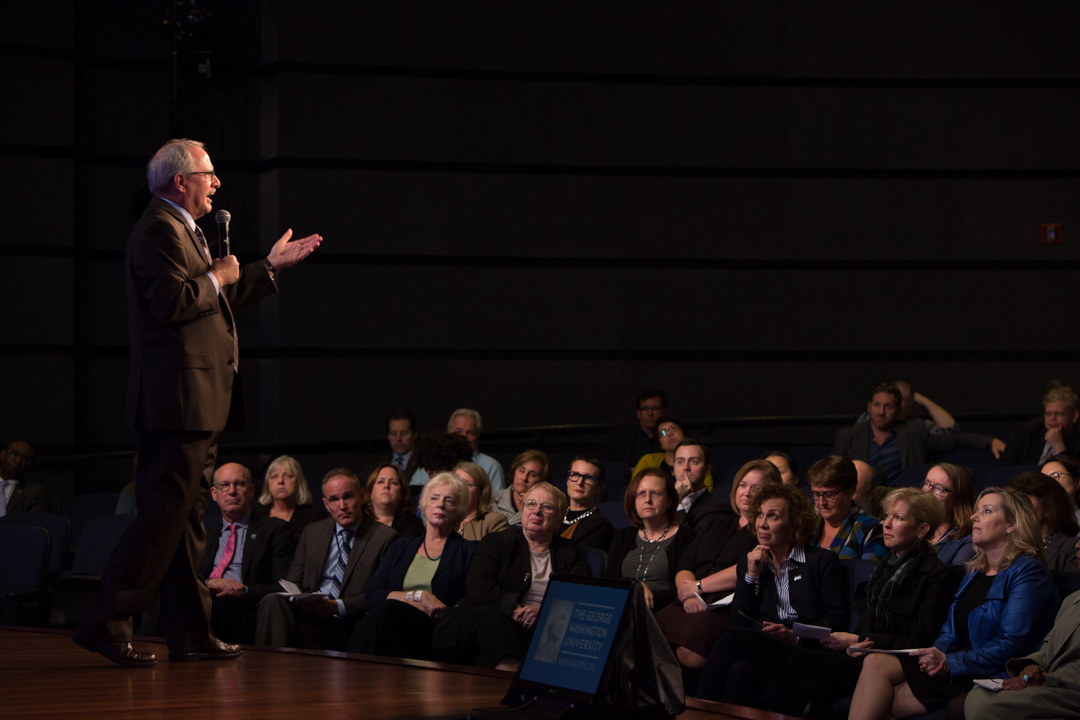By Ruth Steinhardt
George Washington University President Thomas LeBlanc attended his first Faculty Assembly on Tuesday, spelling out his vision of a GW that “aspires to preeminence as a comprehensive global research university.”
Talking to an audience of about 150 faculty members in the Jack Morton Auditorium, Dr. LeBlanc reiterated his five administrative priorities: improving the undergraduate student experience, supporting and leveraging GW research, evaluating resource-raising abilities, rehabilitating GW’s partnership with its medical affiliates and reforming institutional culture.
Dr. LeBlanc also emphasized the breadth of GW’s research aspirations, which he said should include “scholarship in all its forms—from the arts through law, policy, science and engineering.”
The defining investments of GW’s last half-decade were the construction of Science and Engineering Hall and the acquisition of the Corcoran School of the Arts and Design, Dr. LeBlanc said. Together, these decisions represented what he called “a decision to be comprehensive.”
“We need to be strong in the so-called STEM fields—science, technology, engineering and math—[which comprise] an important element of United States competitiveness in the world economy,” Dr. LeBlanc said. “Nevertheless, we have to also be strong in the resources of creativity, imagination and innovation, which we can’t really develop without a strong grounding in the arts and a strong understanding of history and culture.”
As part of his focus on getting GW’s institutional culture to a “culture of yes,” Dr. LeBlanc responded with interest to a faculty member who shared her research findings about how to empower employees. And in response to a question about increasing diversity among faculty, Dr. LeBlanc said that diversity is not a separate issue from preeminence but a precondition for it.
“You cannot get where we’re trying to go without diversity,” Dr. LeBlanc said.
The annual assembly also featured introductions of new faculty from across the university and remarks by Provost Forrest Maltzman, who spoke about the Middle States reaccreditation process, the university’s fiscal performance and enrollment, and the important role that faculty play in enhancing the student experience.
The provost said he was “bullish” on GW’s performance and on its future. The university recorded a revenue margin of $76 million in fiscal year 2016, and its enrollment overall increased. He also commented on the research contributions made by the GW community.
“On virtually every metric we are excelling,” Dr. Maltzman said.
He focused particularly on increased enrollment of graduate and online students.
“When we think of ourselves as a university providing opportunities to different kinds of students, [online learning] is an important component,” Dr. Maltzman said. “All of us should be proud of our improved ability to reach out to students who at one time might have been shut out.”
Faculty Senate Executive Committee Chair Sylvia Marotta-Walters closed the assembly with a review of the Faculty Senate’s activities over the past year and directed faculty to the senate’s revamped website.



